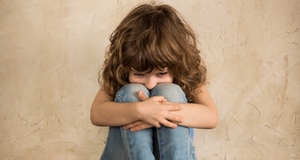Affective Gender Communication: An Interdisciplinary Analysis of Toddler Behavior
By
2020, Vol. 12 No. 10 | pg. 1/1
IN THIS ARTICLE
KEYWORDS
AbstractConversations about the gender expression of young children are often characterized by confusion, as parents, educators, and even child psychologists have a hard time determining where exactly children’s strong gendered beliefs and behaviors come from. Children as young as two have been observed exhibiting behaviors and expressing beliefs that align with the gender binary, yet there are usually no obvious moments when these messages have been translated to them. In an attempt to illuminate these hidden instances of gendering, I take an interdisciplinary approach to this paper that brings together gender studies’ affect theory and psychology’s attachment theory. By applying these theories to ethnographic examples pulled from observations of toddlers at a lab school, I illuminate how gender becomes salient for young children and is incorporated into their developing sense of self. I use affect theory to highlight that affective gender communication has a powerful, unseen effect on the gender socialization process, and call for alternative models of education and parenting that are informed by this argument. For as long as he’s been coming to school, two-year-old Ethan has always gravitated towards cars, trains, and other wheeled vehicles in the classroom. He often lies on his stomach with his head tilted sideways and drives a car back and forth in front of his face while murmuring quietly to himself. Ethan was doing just this when Ruby plopped down in front of his field of vision with a baby doll, who’s diaper she was struggling to put on. Ethan stopped moving the plastic car he was holding and watched Ruby as she haphazardly strapped the diaper around the doll’s midsection and flung it back into a wooden bassinet before striding away. Ethan released the car from his grip and inched his body up from the floor into a sitting position, all the while looking at the dolls in their cradle. He crawled on all fours over to a shelf next to the bassinet, stood up, and with bent knees curled his body into the side of the shelf. A teacher on the other side of this divider spotted Ethan and said “Hello!,” but he quickly ducked down out of her sight with a sheepish smile. For the next few minutes, Ethan kneeled behind the wooden shelf and shifted his gaze between the dolls and the children and teachers which walked past him. Suddenly, Ethan shot his arm out and grabbed onto the hair of one of the dolls close to him, yanking it out of the bassinet. He leapt up from behind the shelf and furtively dashed over to the corner of the classroom. Ethan held the doll upside down and clutched it to his chest while he swayed back and forth, his face bursting into a smile. This moment occurred at a school for toddlers in New York City, where I conducted participant observations during the 2019-2020 academic year. Often after being with the students from this school I found myself filled with questions, and this day was no different. Is Ethan drawn towards cars and trucks because they are toys typically associated with boys? Was he embarrassed to be seen reaching for the doll, a toy typically associated with girls, and is that why he hid behind that shelf? Is he aware of his identity as a “boy”? Given that Ethan is two years old, I cannot ask him any of these questions – I can only do my best to interpret his behavior and emotions based on the context of the moment, his personal history, and relevant theories about toddler development and gender.What I saw in these few moments was a child who wanted to play with the dolls yet seemed hesitant to do so. Even though he is young, Ethan has already been subjected to messages about gender that circulate through our society, and his behavior is doubtlessly impacted by these messages. Young children have been shown to have strong beliefs about the gender appropriateness of colors, toys, physical bodies, and personality traits, and to act in ways which reinforce these beliefs (Taylor, 2009). Despite the fact the school’s staff actively try not to enforce the gender binary, Ethan’s behavior clearly shows that he nonetheless believes adherence to these standards is important. Parents and educators describe children’s opinions about gender as naturally occurring and cannot often pin down moments in which gender stereotypes were confirmed by their parenting or teaching styles. I believe that to explain these forgotten moments, it is useful to put cultural studies of affect theory—the assertion that emotions, senses, and feelings are powerful forces in society—in conversation with psychology’s attachment theory—a model which seeks to describe long term, intimate relationships between children and their caregivers. In this paper, I argue that gender gains cultural power through the circulation of affect, and that affect is circulated through the emotional attachment relationships which form children’s ideas about the world and their place within it. Attachment between a caregiver and child is defined by the security of that relationship, or children’s perception that their caregiver is a safe haven (i.e “available, comforting, and reassuring at times of stress”) and a secure base (“encourage[ing] exploration and individuality”) (Menon et al., 2017, p. 93). Psychologists studying these attachment relationships have previously investigated the role that gender plays in the development of these emotional attachment relationships (Root & Denham, 2010), yet have only just started exploring how the emotions involved in attachment relationships themselves have the power to influence children’s ideas about gender (Menon et al., 2017; Chaplin et al., 2010). An example of the research being done in this relatively new field is the finding that the parents’ ability to communicate and accurately explain emotions to their children affected the children’s sense of well-being and comfort in regard to their gender identity (Menon et al., 2017, p. 91). In this paper, I want to further the discussion of how emotions affect the process of gender socialization by bringing in concepts from gender studies, namely affect theory. Affect theory is a central concept in gender studies that scholars have deployed in relation to the production of gendered and racialized subjects. In The Romance of the Amazing Scalpel, Aren Aizura explores dynamics of gendering that are produced by the affective economy that exists within Thailand’s gender reassignment clinics and makes salient how emotional relationships can produce gender identities. Aizura defines affective labor as “work that blurs the line between a purely commercial transaction and an exchange of feeling” (2011, p. 157) and explains how despite the fact that clinic workers are paid, the affective services they provide still produce real emotional connections. The concept of affective labor exposes the transactional nature of emotional relationships and inspires a deep investigation into the products of affectual attachments. Similarly, a consideration of affect theory in the context of child development could explain the disconnect between parental and educators’ intentions and the mysteriously gendered subjects they are faced with. Affect theory illuminates the possibility that the emotions exchanged through affectual attachment relationships could be a crucial component of the strongly gendered views of young children. I will further explore this assertion in the remainder of this paper by engaging with psychologists and feminist scholars, as well as through analysis of my observations at the NYC toddler program. It was at this program where I heard a mother exclaim “She has some powerful feelings!” about her two-year old daughter, and afterwards I began to contemplate the deeper meaning of this statement. Through my writing, I hope to answer an initial question (How do adults transmit messages about gender and how are they absorbed by children?) by thinking about a second question: How can the concept of ‘affect circulation’ that emerges from feminist studies contribute to how we understand the gendering process in children? Ultimately, what I am interested in is how to facilitate a robust concept of selfhood in children without also facilitating stereotyped gender views and the imposition of the gender binary upon that self-image While my study is on a small and limited scale, I believe that it can provide crucial insights by emphasizing the importance of feminist attention to affect in conversations about child development. Research MethodologyBy placing gender development, affect theory, and attachment theory in conversation with one another, I am embarking on an interdisciplinary project with the goal of exposing the unconscious behaviors and emotions that contribute to the gendering of young children. The interdisciplinary nature of my work necessitates that I combine knowledge, resources, and mentorship from a variety of disparate sources and departments, and I am often faced with the challenge of finding common language and methods within psychology and gender studies. By engaging with texts from syllabi of classes past, I hope to bring together my experiences in both arenas and dismantle some of the barriers that exist between the related subjects. I will engage with attachment and child development theories through a feminist lens and apply a social science method of participant observation to affect theory. In order to summarize the theoretical framework of my argument, I create bridges between child psychology research and theoretical concepts from gender studies. These bridges have been heavily informed by the work of scientists who focus on gender issues such as Rebecca Jordan-Young, Gina Rippon, and Sandra Bem. Each concept I introduce in my background section builds upon the last, so that when finished I have a toolbox filled with the theoretical tools needed to perform an intersectional analysis of evidence I collected while conducting participant observations at the NYC-based toddler program. During the months I’ve spent thinking about these topics of gender and child development, it has been essential for me to spend time with and observe young children. They bring life to the concepts I’m studying, challenge my assumptions about the way children behave, and create opportunities for learning. Most importantly, it has been my relationships with young children that make me hopeful for the future and motivate me to bring conversations about gender into the worlds of parenting and education. Amid academic dialogue about child development, we need to remind ourselves of the small humans of which we speak: their personalities, experiences, bodies, and behaviors. Therefore, I’ve attempted to make my argument come to life by incorporating descriptions of toddlers' behaviors and their interactions with caregivers. These descriptions come from participant observations conducted at a toddler program over the course of five months. The name of the school as well as the original names of the children, teachers, and parents I describe have been changed for confidentiality purposes. For the remainder of this paper, I will be referring to the toddler program as Toddler Academy, or TA. Toddler Academy is a first school experience for toddlers (two and three-year-old’s) and their parents, as well as a research institute focused on toddler development. TA, housed at an urban, private academic institution, also offers an undergraduate course in toddler development to provide a unique learning experience for college students. I was introduced to TA’s program through my role as a student in this seminar and decided to conduct research for this project here because of their exclusive focus on toddlers and approach informed by developmental psychology. TA’s philosophy is based on the understanding that children learn by doing, and the belief that making novel discoveries stimulates feelings of mastery and confidence (from the Toddler academy website). Teachers at TA create a structured schedule and consistent expectations so that the children take ownership of their routine and support them through social interactions with other toddlers. According to the Director of TA, their general policy for when topics of gender come up in the classroom is to follow the child’s lead and to avoid stereotypes. Gendered phrases like “boys and girls” are exchanged for “children” and “friends,” and if a child indicates their gender to a teacher, that teacher will respond with affirmation and validation, regardless of whether this expressed gender is consistent with their sex at birth. The TA Director also noted that from her perspective, moments of this nature are relatively rare in the classroom because topics of gender are not particularly important in the toddler world. I hope to challenge this statement in later sections of this paper. While Toddler Academy is an interesting research site because it encourages the free choice and autonomy of children, it is distinct from mainstream day care centers and preschools in several ways. Teachers at TA frequently receive feedback from supervisors about whether their actions were consistent with the school’s pedagogical agenda, and parents receive specific guidance and coaching from teachers. There is a 2:1 student/teacher ratio at TA, all the main teachers in the classroom are women, and in the group of assistant teachers there is only one man. The majority of teachers are white, and every educator in the classroom has at least a bachelor’s degree (or has almost completed one). Each of the classes at TA has thirteen children enrolled, with an equal number of boys and girls, and TA utilizes a sliding scale tuition model which allows them to offer tuition that is in proportion with each family’s income and financial resources (Toddler Academy’s website). 35% of TA families pay sliding scale tuition, so the school hopes that the diversity of their community represents the “racial, cultural, economic” diversity of the city in which they are located (Toddler Academy’s website). A further investigation of the process of gender development in young children would include observations conducted at other, more traditional preschool research sites. I feel very lucky to have had the opportunity to observe toddlers for this research project, for their developmental period makes them a particularly illustrative and interesting subject pool. Toddlers are children between the ages of 12 to 36 months and differ from younger and older children in the intensity of their drive to learn, the holistic nature of their learning patterns, and a preoccupation with constructing a “definition of self” (Lally & Magione, 2006, p. 3). I am studying both the way in which information about gender is transmitted to children and how children absorb this information, thus toddlers’ learning process serves as an exaggerated example of this process and the toddler years are a formative moment for the construction of self-identities. Toddlers “build a first sense of self through their interactions,” therefore parents and teachers who spend time with toddlers play a principal role in how the child understands their personhood. J. Ronald Lally and Peter Mangione write of toddlers: “How they are treated and what they are allowed and expected to do and not do are incorporated into the infant’s development of self” (2006, p. 18). Knowing the importance of expectations and messages delivered by caregivers necessitates a deep investigation of the nature of these exchanges, and for this reason I’m interested in how gender identities are confirmed during the toddler years. Analytic Tools from Psychology and Gender StudiesFeminist Science ScholarshipThis paper builds upon the understanding that the concepts of gender and gender identity are socially constructed. Personally, this concept first became clear when reading Judith Butler’s “Performative Acts and Gender Constitution” in a foundational gender studies class. In this article, Butler argues that gender identity is not a stable construct but is in fact “an identity tenuously constituted in time - an identity instituted through a stylized repetition of acts” (Butler, 1988, p. 519). Butler establishes that it is through acts, gestures, and the visual and clothed body that gender is constituted by an individual, and not through established biological or innate traits. (1988, p. 531) This concept of socially constructed categories of identity has also been taken up by critical race scholars and rejects the notion that gender and race are biologically based. Arguments that gender is determined biologically have not been altogether left behind, however, and there is a wealth of psychological and neuroscience studies asserting that fetal hormone exposure causes an undifferentiated brain to become gendered, leading to structural differences in the brain and the later development of gender characteristics (Phoenix et al., 1959; Money & Ehrhardt, 1972; Berenbaum & Beltz, 2016). In her 2010 book Brainstorm: The Flaws in the Science of Sex Differences, sociomedical scientist and gender studies scholar Rebecca Jordan-Young refers to this field of research as “brain organization research,” and discusses how these theories have been used to defend traditional gender roles at work and at home (Jordan-Young, 2010, p. 4). Jordan-Young explores the scientific evidence for the brain organization theory of gender by conducting a comprehensive survey of relevant literature, and “sets out to question answers” that have been reached about how the brain is hardwired for gender (2010, p. IX). She questions the research methods used by brain organization theory scientists and the assumptions that have been made in this field about the innate quality of gender characteristics themselves. Brainstorm not only provides compelling arguments for why the field of developmental psychology should outgrow brain organization theory; it is also an example of the importance of performing a feminist analysis of scientific concepts—just as I am doing in this paper. Autism researcher Gina Rippon builds upon Jordan-Young’s work of questioning the hardwiring of the brain for gender differences in her book Gender and Our Brains: How New Neuroscience Explodes the Myths of the Male and Female Minds. Rippon examines arguments which assert that gender differences come from biologically distinct structural differences in the brain and shows that the brain is actually far more changeable than that line of reasoning assumes. According to Rippon and recent research in the field of experience-dependent plasticity, “our experiences and the things we do and, paradoxically, the things we don’t do” have a drastic effect upon the physicality and functioning of the human brain (Rippon, 2019, p. 109). This claim is a remarkable contribution to the psychological conversation of gender development because it necessitates re-examining just how much the experiences of men and women differ. With this project, I incorporate Ribbon’s argument about the plasticity of the brain into a discussion of toddler and child development, and argue that to evaluate gender socialization, the field should frequently ask questions like: How do children labelled “girl” at birth experience their early environment differently than children labelled “boy”? How are messages about gender conveyed to young children, and in what way do these messages alter their rapidly developing brains? In the following section, I will summarize various psychological approaches to gender development and examine the ways in which they are pertinent to the formulation of my argument. I introduce social learning theory and then cognitive developmental theory to establish that children are active agents in their own education about gender. Next, I touch upon Sandra Bem's gender schema theory, which presents a model for how young children cognitively encode information about gender from their environment into their developing brains. Albert Bandura, a Canadian psychologist, has posited that children learn from those around them, and are motivated to act in socially appropriate ways by rewards and punishments. He calls this social learning theory, and though SLT makes the interesting proposition that learning about masculine and feminine concept occurs in the same way as other types of learning, it “treats the child as a relatively passive recipient of environmental forces rather than as an active agent striving to organize and thereby comprehend the world” (Bem, 1983, p. 600). Cognitive-developmental theory, on the other hand, positions children as the primary agent of their own learning, particularly when it comes to gender. Lawrence Kohlberg, who originally described this theory in 1966, argued that children actively seek out information about gender roles in society to fulfill their need for cognitive consistency, and to bolster their view of themselves as one gender or the other (Kohlberg, 1966, p. 89). Kohlberg’s contribution to psychology’s understanding of children’s gender development is unique because it suggests that the way children process information from society about gender is determined by their perception of their own gender identity. The work of cognitive-developmental theory confirms that children’s understanding of their own identity and the information which exists about gender in society influence one another. However, cognitive-developmental theory fails to explain how this information about gender is transmitted to children and the methods children use to encode it. In “Gender Schema Theory and Its Implications for Child Development: Raising Gender-Aschematic Children in a Gender-Schematic Society,” Sandra Bem introduces a theory that, like cognitive-developmental theory, situates the child as an active member of their learning process. She proposes “gender schema theory,” or GST, as a model of the way that children cognitively encode and approach ideas about gender (Bem, 1983). A “schema,” as described by Bem in “Gender Schema Theory: A Cognitive Account of Sex Typing,” is an anticipatory structure in the brain with a readiness to decipher new information in schema-congruent terms (Bem, 1989, p. 355). Bem argues that the GST is a formative cognitive schema for children because of gender’s cultural importance. In an earlier article, she writes that society teaches “the substantive network of sex-related associations that can come to serve as a cognitive schema and… that the dichotomy between male and female has intensive and extensive relevance to virtually every domain of human experience.” (Bem, 1983, p. 609) Thus, children learn to focus in on any salient information about gender that comes into their environment, as well as to understand that information in the context of already established ideas they have about gender. For Bem, GST is different from cognitive-developmental theory because it acknowledges gender’s “cognitive primary” over other incoming information, or the reason why children focus on information about gender so deliberately. Bem states “society's ubiquitous insistence on the functional importance of the gender dichotomy must necessarily render it even more cognitively available,” and argues that this primacy would dissipate if the associative network of gender in society were to shrink (Bem, 1983, p. 609). I agree with Bem about the power that gender holds in our society, however I think that there are other social categories which hold just as much, if not more, significance. I want to revise Bem’s assertion that gender has cognitive primacy for children to take into account scholarship on race, age, socioeconomic status, etc. and say that all social categories have cognitive primacy. For the purposes of this paper, I will be focusing specifically on gender, but a critical extension of my research would be to examine if my argument about the power of affect in child development can be extended to other social categories. Gender schema theory illustrates how messages about gender can shape the brains of young children; however it is unsuccessful in explaining the ways that these messages are conveyed to young children, and how, depending on a child’s gender, messages are conveyed differently. I find a partial answer to this query by returning to Rebecca Jordan-Young’s and Gina Rippon’s books, in which both authors discuss the impact that expectations have on human behavior. In the penultimate chapter of Brainstorm, Jordan-Young uses cases of congenital adrenal hyperplasia, a group of hormone disorders which cause people to be born as intersex, to illustrate how expectations of gender-incongruency by parents leads to behavior and interpretations of behavior in children that align with those expectations (Jordan-Young, 2010). Rippon writes about how scientists studying brain development need to be more aware of the social rules that are being absorbed by children, for “attitudes and beliefs” have a significant impact on their brains (Rippon, 2019, p. 347). As I introduced previously, affect theory makes clear that emotions and ideas such as those discussed here are productive in society. Thus, by explicitly considering affect theory in relation to Jordan-Young and Rippon’s assertion that expectations, attitudes, anxieties, and beliefs about gender are essential in the gendering process of brains, I hope to take this argument one step further. Affect TheoryBem, Jordan-Young, and Rippon all advocate for considering the influence of society, culture, and environment when examining the process in which young children become gendered. I take this recommendation seriously in the following section of my paper by putting affect theory in conversation with theory on gender and child development. Affect theory is informed by feminist perspectives on the power of invisible forces in society which perpetuate social constructs like race and gender. This perspective is especially useful for my examination of the evidence I’ve gained from observing at Toddler Academy While the teachers and staff strive to follow the children’s lead when it comes to gender and steer clear of statements that confirm the gender binary (unless they relate to genitals), an affect-informed approach is essential for illuminating the unconscious, ambiguous influences on gendering that persist under the surface of these other interactions. Sara Ahmed argues in “Affective Economies” that through the intensity of their attachments to certain individuals in society, emotions “do things” (2004, p. 119). These productive capacities of emotion are called “affect,” or the “manifestations of a subjectively experienced emotion” (Merriam Webster Dictionary online). In her essay, Ahmed articulates that emotions are productive because instead of originating inside of the body and then moving outside of it, emotions “create the very effect of the surfaces or boundaries of bodies and worlds” (2004, p. 117) They do not reside within individuals, but in fact mark the surfaces of individual subjects by their movement and circulation through the social field (Ahmed, 2004, p. 120). As emotions circulate through the social world, Ahmed suggests that they accrue value and meanings that are separate from the bodies which they sometimes inhabit: “That is, emotions work as a form of capital” (Ahmed, 2004, p. 120). As capital accumulates within these moving feelings, an “affective economy” is formed. The value accrued by the movement of affects lands within emotions and signs that have been circulated the most, creating relationships of differing value between subjects. This is what emotions do according to Ahmed; they create relationships of difference and displacement between various individuals (Ahmed, 2004, p. 117). Ahmed’s argument illuminates how emotions expressed by individuals are less a matter of internal experience, but function to confirm their positionality in the social sphere. Young children, especially toddlers, are searching for any such cues which indicate their place and role in the world. Therefore, these emotional messages, or affects, are particularly salient to toddlers who learn to encode the emotions of others through their gender schema as proof of gender group membership. The cognitive primacy of social categories can be further explained by Ahemd’s concept of “affective economies:, as she argues that signs which accrue the highest value are those which have circulated the most in society. Gender alone is implicated in clothing choices, colors, workplace dynamics, names, haircuts, toothbrushes, and infinitely more. Thus, moments when affects and emotions associated with the gender binary circulate past the highly perceptive ears and eyes of children are abundant. To young children, this is proof that gender categories must be exceedingly important to their successful understanding of the world, and as their “job” is to attain independence and competency, they grasp onto any such clues tightly. Attachment TheoryAffective messages about gender circulate all throughout a young child’s social world, yet there are certain situations when these affect have more reproductive power. Close, personal relationships dominate the early years of a child’s life, and their connections with their parents, grandparents, siblings, teachers, and whoever else they spend their time with are incredibly formative. These attachment relationships determine the amount and kind of care children receive, which in turn influences their self-perception, their opinions about the world, and their beliefs about where they fit in. Children’s attachment figures, engrossed in the emotional process that is raising a child, might not always be fully aware of the implications of their words or actions, and thus affectively charged messages about gender frequently seep their way into the relationship. The concept of attachment was first explored in the mid-1900s by psychologists John Bowlby, Mary Ainsworth, and other scientists, who all worked with and were influenced by each other in their efforts to study parent-child bonds. In the first installment of John Bowlby’s book series Attachment and Loss, he introduced an interdisciplinary approach to studying attachment that combined Charles Darwin’s evolutionary theory and Sigmund Freud’s psychoanalysis (1969, p. 19). This perspective, argued Bowlby, would highlight the profound impact that attachment quality had on biological mechanisms in ontogenetic and early development in children (Bowlby, 1969, p. 78). Additionally, Bowlby’s emphasis on the importance of observing children and child/caregiver dyads set the stage for the majority of later research into attachment and influenced my research methods for this project. Building on Bowlby’s work, developmental psychologist Mary Ainsworth developed the “Strange Situation,” a setting created to observe children with their parents and ascertain attachment style (Ainsworth & Bell, 1970, p. 53). Depending on the characteristics of a child’s relationship with their primary attachment figure, the attachment style falls into one of three camps, which Ainsworth described as “affectual bonds” (1970, p. 50). A secure attachment style is defined by the child’s belief that their caregiver is accessible, helpful, and effective at calming when the child needs them to be (Sroufe, 2005, p. 355). There are two main types of insecure attachment style. First, avoidant attachment style is a distant, estranged relationship in which the caregiver fails to provide comfort of communication when the child seeks it out. Children with this attachment style learn that the world is an unforgiving place and believe they can only rely on themselves to provide for their needs (Sroufe, 2005, p. 357). Second, there is ambivalent or anxious attachment style, which is primarily needy and clingy from the side of the child and the side of the caregiver. Caregivers who facilitate an ambivalent/anxious attachment style fail to encourage exploration and independence and are inconsistent in their abilities to provide comfort. Children with this attachment don’t know what they can expect and anticipate from the world in which they live, thus they are constantly aroused and unsure (Sroufe, 2005, p. 357). The primary definitive characteristic of these attachment styles is emotional support and availability. Securely attached children believe whenever they need comfort from their caregivers, they will receive it – even if they are exploring their independence. Insecurely attached children, however, have doubts about whether their caregivers will be emotionally available to them. Drawing upon affect theory, it is clear that within parent/child relationships, emotions can be productive of both certain kinds of relationships and self-image. Given that attachment relationships produce beliefs in children about their role and importance in the world, could these relationships also produce beliefs about gender? I will explore this question further in the next section of my paper. Affective Gender CommunicationThus far, I have summarized developmental psychology, affect theory, and attachment theory in relation to my project to illuminate the hidden, unconscious moments when ideas about gender are transferred to young children. These all provide the theoretical background necessary for my argument that gender socialization occurs during affectively charged moments between caregivers and children. I refer to this transference of affect as affective gender communication and suggest that emotional communication between caregivers and children not only influences their attachment relationships, but also informs their beliefs about gender. Various academic studies, primarily in the field of developmental psychology, have explored emotions’ capacity to produce attachment relationships and beliefs about gender, however none identify this phenomenon as affect theory (Chaplin et al., 2010: Root & Denham, 2010; Mansson, 2011; Menon et al., 2017). Annika Mansson’s “Becoming a Preschool Child: Subjectification in Toddlers During Their Introduction to Preschool, From a Gender Perspective” chronicles her study of the development of gender subjectivity in a Swedish preschool classroom. Her findings prove that information about gender is communicated primarily within close, gendered relationships and that gender is incredibly salient and impactful in the toddler world. My own research is clearly in conversation with scholars such as Mansson, however this project departs from past studies by its explicit naming of the joint power of affect and attachment. Adding affect theory and a feminist lens to the conversation these studies engage with illuminates the importance of understanding emotional attachment relationships and gender identity as socially reproduced. Returning to Judith Butler’s assertion that gender is “an identity instituted through a stylized repetition of acts”, it’s clear that the many thousands of interactions which take place between a caregiver and a child could repeat in such a way that reproduces gender stereotypes already present in society (Butler, 1988, p. 519). Additionally, the frequency with which positive and negative emotions are circulated through these interactions have been shown by attachment theorists to generate children with different identities, beliefs and characteristics based on the security or insecurity of their relationship with their caregiver. The appearance or characteristics of a particular attachment varies greatly depending on context, or the environment in which a child finds themselves and in which parenting occurs. The importance of context was underscored by Theodore Wachs in “Temperament and Development,” in which he argues for the widespread influences such as cultural context, genetics, biomedical causes, and environment which influence the temperament and identity of all children (2004, p. 17). Understanding the importance of context motivated me to reconsider the environment at Toddler Academy multiple times during the period in which I conducted ethnographic observations, and ultimately illuminated an alternative mode of analysis. Observing Gender, Attachment, and Affect in ContextThis final section of my paper applies my argument about the pervasive power of affective gender communication to anecdotes from Toddler Academy. Conducting participant observations at TA has allowed me to observe interactions between toddlers and their parents, teachers, and classmates. This unique perspective reveals that as much as the process of gendering is influenced by parental attachment relationships, close relationships with teachers and peers also play an impactful role. The following ethnographic observations include examples of caregiving practices, peer influence, parenting style, and contextualizing the unconscious gendering processes that are so often forgotten. Additionally, analyzing these examples has provided a framework for an alternative approach to parenting and education that, when combined with knowledge about affective gender communication, could prove to be a powerful antidote to more harmful gender socialization. During my observations of the children at Toddler Academy, I have been struck by the eagerness and passion with which two and three-year olds approach learning new information, as well as their tendency towards black and white thinking. The prevalence of this tendency is essential in considering the way that toddlers interpret messages about gender, and it is exemplified by student Jamie’s behavior in the classroom. Jamie repeatedly picks up classroom objects and, turning towards a nearby teacher, asks “mine?.” If the teacher responds with an affirmative, Jamie will grasp the object tightly and proudly stuff it into the Toddler Center tote bag which often hangs over his shoulder. Jamie views everything in the classroom as belonging to two strict categories: “mine” and “not mine” and finds great joy in sorting the objects he encounters accordingly. This tendency to divide the world by ownership is reflective of the individualistic, capitalist society in which Jamie lives. He is beginning to understand his independent selfhood and has ascertained that being an individual in this world means owning objects. It is with this same eagerness that Bem describes children learning about gender differences; they have learned that not only each person in the world, but every trait, item, and profession belongs to one of two categories and they act as tiny detectives when determining new categorizations. Besides its cultural importance, gender is both calming and intriguing to toddlers because it follows with their instincts to separate the world into digestible categories. Social identities are an example of one of the largest of these categories that toddlers are exposed to, and it is not only children for whom these categories are salient and calming. Adults often process information from their environment in ways that are consistent with the gender binary, and one can only imagine the power that this has over their children. Early on in the year at TA, a mother who previously had a son enrolled at TA remarked “I never realized when my son was here how much I focused on the behavior of the other boys, but now that my daughter attends the TC, I can’t take my eyes off of the other girls!” This mother’s attention while at TA was entirely dictated by the gender of the child she had there with her; this time her daughter Camille is enrolled so she’s watching all of the other girls. This phenomenon illustrates the way society’s beliefs about gender have been internalized by this mother, and also how patterns of gendering can be entirely unconscious until one’s attention is brought to them. If the mother only observes Camille’s same-gender peers, then her standard of comparison for Camille will be entirely determined by the other girls in her class. Regardless of whether this mother encourages her daughter to be the same as or different from these peers, she is viewing Camille through this gendered lens and this impacts her expectations and standards. Rebecca Jordan-Young and Gina Rippon both separately argue that expectations and standards around gender are particularly influential in producing gendered subjects, and Camille’s mother is a primary example of the way that these expectations are obtained by caretakers of young children. Jordan-Young and Rippon also assert that expectations can produce anxieties, as well as powerful emotions that are transmitted between caregivers and children. While observing at TA, I paid particular attention to emotional moments between toddlers and their caregivers and considered how parents’ emotions were understood by and were affecting their children. Ethan, the child highlighted in the anecdote which began this paper, is an example of a child who has internalized society’s messages about gender-appropriate play. He is obviously drawn to the doll, yet hides his interest from teachers and peers and runs to a corner with the toy before expressing his joy in obtaining it. Given Ethan’s history of playing almost exclusively with cars and trucks at TA, this change in behavior could symbolize what is to him deviance along gender-typical lines. Before beginning my analysis of the ethnographic evidence from Toddler Academy, I would have interpreted this moment as simply a confirmation of my hypothesis about the power of affective gender communication. However, after immersing myself in the world of toddlers, I recognize this moment as an opportunity for intervention. When I began my ethnography at Toddler Academy, I expected to see many moments in which adults conferred messages about gender to children through affective gender communication that aligned with gender stereotypes. I did see this a bit from some parents in the classroom, with teachers I actually saw interactions which contradicted gendered stereotypes and seemed to encourage gender-atypical behaviors in the children. The following excerpt from my fieldnotes describes a teacher supporting a student through a difficult moment in a way that strengthens their attachment relationship without strengthening the student’s gendered behavior.
In this moment, it’s clear that Jalisa is really angry that she can’t go on the slide yet, and she gets even more agitated when the teacher removes her from the structure. Anger is a typically masculine emotion that caregivers usually discourage in young girls (Root & Denham, 2010). However, not only does this teacher tell Jalisa “It’s okay to be angry.,” she also says “I’ll still love you,” or in other words, your gender atypical behavior doesn’t negatively affect our relationship. The more time I spent at the Toddler Center, the more I noticed that the teachers support the children’s anger no matter what their gender is. Sadness comes up for many children at the Toddler Center because this is many of their first experiences being separated from their primary caregiver for an extended period of time. As a typically feminine emotion, studies have found that young boys who express sadness typically receive negative reactions from their caregivers as a result. However, at the Toddler Center, I saw teachers handle boy students’ sadness with empathy and love again and again. If one of the students started to cry when their caregiver left, or even later in the day became quiet or reserved, the teachers would scoop them up, hold them tightly, and whisper “You can ALWAYS cry at the Toddler Center.” Or “We’ll take care of you when you’re sad.” Similar to how they handled girl’s anger, teachers at the Toddler Center would respond to boys’ sadness in ways that normalized their emotions and reassured the children that they would be loved and cared for regardless of how they acted. And again, this response was consistent across both genders of children. Applying this particular method of affective gender communication to moments particularly charged with gendered emotions (such as Ethan’s embarrassment for playing with the doll) is a compelling way of disrupting normative patterns of gender socialization. Reacting with affective warmth and positivity to children’s gender congruent and incongruent behavior reinforces more explicit messages that may be sent by parents and educators about challenging and avoiding gender stereotypes. ConclusionToddlers at TA ask many questions to inform their knowledge about the classroom and themselves, such as “Mommy come back?,” “Who dat?” and “Mine?” As part of this process, children learn right away that to thrive in society they need to understand and conform to gender norms, and I argue that all social identities have this early importance to toddlers. It is through affective gender communication between children and their attachment figures that these social identities such as gender gain their power and are transmitted to children. Early understanding of gender and gender identity is formed by affective practices of soothing and emotional modeling, which later impacts children’s perception of their own gender identity. Exposing the power of affective gender communication helps to illuminate the mystery of how children develop behaviors and preferences that are consistent with the gender binary. What I witnessed at the Barnard Toddler Center inspired me to begin thinking about ways that affective gender communication can be employed to create positive, non-stereotypical notions about gender for young children. My academic research confirmed the hypothesis that affectual attachment relationships fuel gender socialization in young children but spending time with teachers and toddlers showed me how affectual attachment relationships can undo or hinder gender socialization as well. Moving forward it’s important to inform caregivers, parents, and educators about the power of affective gender communication so that there will be less confusion about how children become inoculated into gendered society. Feminist psychologists and educators need to continue to explore ways that these same communication tools can be employed to strengthen attachment relationships while also raising children that have senses of self and identity that are less impacted by society’s harmful gender stereotypes. ReferencesAhmed, S. (2004). Affective Economies. Social Text, 22(2), 117–139. Retrieved from https://muse.jhu.edu/article/55780 Ainsworth, M. D. S., & Bell, S. M. (1970). Attachment, Exploration, and Separation: Illustrated by the Behavior of One-Year-Olds in a Strange Situation. Child Development, 41(1), 49. https://doi.org/10.2307/1127388 Aizura, A. Z. (2011). The Romance of the Amazing Scalpel:: “Race,” Labour, and Affect in Thai Gender Reassignment Clinics. In P. A. Jackson (Ed.), Queer Bangkok (pp. 143–162). Hong Kong University Press. Retrieved from https://www.jstor.org/stable/j.ctt1xwdfx.12 Bem, S. L. (1983). Gender Schema Theory and Its Implications for Child Development: Raising Gender-Aschematic Children in a Gender-Schematic Society. Signs, 8(4), 598–616. Retrieved from https://www.jstor.org/stable/3173685 Bem, S. L. (1989). Genital Knowledge and Gender Constancy in Preschool Children. Child Development, 60(3), 649–662. https://doi.org/10.2307/1130730 Berenbaum, S. A., & Beltz, A. M. (2016). How Early Hormones Shape Gender Development. Current Opinion in Behavioral Sciences, 7, 53–60. https://doi.org/10.1016/j.cobeha.2015.11.011 Bowlby, J. (1969). Attachment and loss [electronic resource]. London: Institute of Psycho Analysis. Butler, J. (1988). Performative Acts and Gender Constitution: An Essay in Phenomenology and Feminist Theory. Theatre Journal, 40(4), 519–531. https://doi.org/10.2307/3207893 Chaplin, T. M., Casey, J., Sinha, R., & Mayes, L. C. (2010). Gender differences in caregiver emotion socialization of low-income toddlers. New Directions for Child and Adolescent Development, 2010(128), 11–27. https://doi.org/10.1002/cd.266 Jordan-Young, R. M. (2010). Brain storm [electronic resource] : the flaws in the science of sex differences. Cambridge, Mass: Harvard University Press. Kohlberg, L. (1966). A cognitive-developmental analysis of children’s sex-role concepts and attitudes. In E. Maccody (Ed.), The Development of Sex Differences. Stanford University Press. Lally, J. R., & Mangione, P. (2006). The Uniqueness of Infancy Demands a Responsive Approach to Care. YC Young Children, 61(4), 14–20. Retrieved from https://www.jstor.org/stable/42729958 Månsson, A. (2011). Becoming a Preschool Child: Subjectification in Toddlers During Their Introduction to Preschool, from a Gender Perspective. International Journal of Early Childhood, 43(1), 7–22. https://doi.org/10.1007/s13158-010-0022-6 Menon, M., Menon, M., Cooper, P. J., Pauletti, R. E., Tobin, D. D., Spatta, B. C., … Perry, D. G. (2017). Do securely and insecurely attached children derive well-being from different forms of gender identity? Social Development, 26(1), 91–108. https://doi.org/10.1111/sode.12191 Money, J., & Ehrhardt, A. A. (1972). Man and woman, boy and girl: Differentiation and dimorphism of gender identity from conception to maturity. Oxford, England: Johns Hopkins U. Press. Phoenix, C. H., Goy, R. W., Gerall, A. A., & Young, W. C. (1959). Organizing action of prenatally administered testosterone propionate on the tissues mediating mating behavior in the female guinea pig. Endocrinology, 65(3), 369–382. https://doi.org/10.1210/endo-65-3-369 Rippon, G. (2019). Gender and our brains : how new neuroscience explodes the myths of the male and female minds. New York: Pantheon Books. Root, A. K., & Denham, S. A. (2010). The role of gender in the socialization of emotion: Key concepts and critical issues. New Directions for Child and Adolescent Development, 2010(128), 1–9. https://doi.org/10.1002/cd.265 Sroufe, L. A. (2005). Attachment and Development: A Prospective, Longitudinal Study from Birth to Adulthood. Attachment and Human Development, 7(4), 349–367. Taylor, M. G., Rhodes, M., & Gelman, S. A. (2009). Boys Will Be Boys; Cows Will Be Cows: Children’s Essentialist Reasoning about Gender Categories and Animal Species. Child Development, 80(2), 461–481. Retrieved from https://www.jstor.org/stable/29738627 Wachs, T. D. (2004). Temperament and Development: The Role of Context in a Biologically Based System. Zero to Three (J), 24(4), 12–21. Suggested Reading from Inquiries Journal
Inquiries Journal provides undergraduate and graduate students around the world a platform for the wide dissemination of academic work over a range of core disciplines. Representing the work of students from hundreds of institutions around the globe, Inquiries Journal's large database of academic articles is completely free. Learn more | Blog | Submit Latest in Women's & Gender Studies |


















